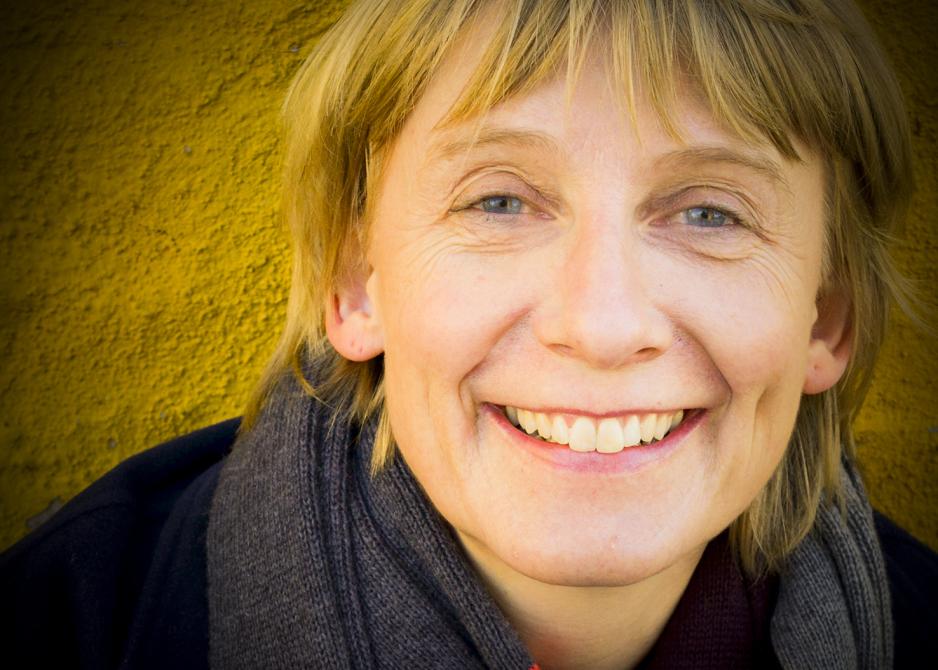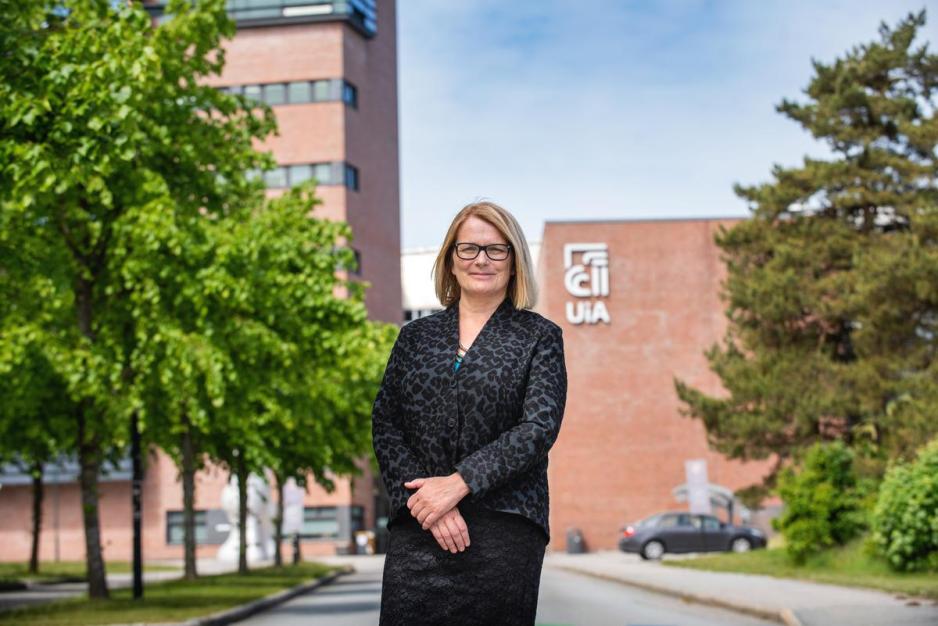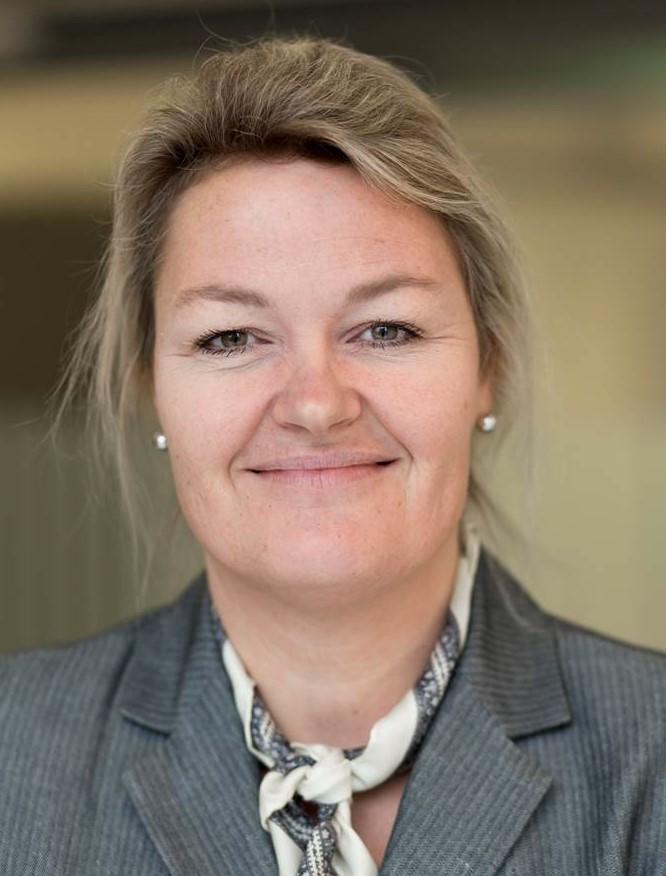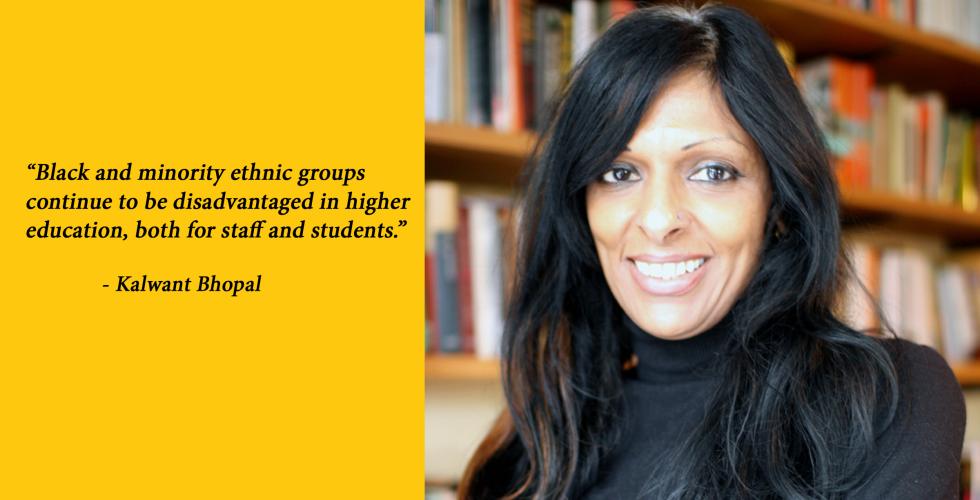“Academia is not done discussing diversity”
When universities and university colleges look to increase their ethnic diversity, they often choose the path of internationalization. “In Norway, we are by no means done discussing what diversity really means,” says Beret Bråten.

We have not gotten to the bottom of every issue, according to Bråten, an associate professor at the University of Oslo’s Centre for Gender Research.
Ethnic diversity is a component in the action plans for gender equality and diversity at many Norwegian universities and university colleges. The University of Agder (UiA) is one of those that seeks greater ethnic diversity and associates it with internationalization.
Seeking more ethnic diversity, often by internationalizing
“We want to have a working and study environment with a variety of experience backgrounds,” says Sunniva Whittaker, Rector of UiA.
Ethnic diversity is a natural part of the mix, but the university has no specific targets in this area.
“Most universities, UiA included, have some proportion of employees from abroad. We have always strived for diversity, but increasingly it gets put under the same umbrella as gender equality and inclusion,” explains Whittaker.
UiA has nearly 300 foreign employees, more than 20 per cent of its work force. Among students, non-Norwegians make up roughly 6 per cent. This large proportion of employees and students with foreign backgrounds is consistent with the university’s objective of being an open, diverse workplace.

“Norwegian instruction is the institution’s responsibility”
An important task is making sure to provide good opportunities for employees with a foreign background to learn the Norwegian language.
“We’re in the midst of drafting our language-policy guidelines. We want to draw attention to the importance of learning Norwegian to qualify for a permanent position at the university,” says Whittaker.
“This is not the individual’s responsibility. It is the duty of the institution to provide employees with the opportunity to learn Norwegian. The attitude mustn’t be that they should just learn it within three years. There must be a support structure in place to make this possible,” she adds.
The UiA rector says the university wants to turn its international diversity to even greater advantage. International recruitment ensures a pool of people with different backgrounds and experience.
Diversity can be actively utilized
In addition to its action plan for gender equality, diversity and inclusion, UiA is preparing an action plan for internationalization.
“There we are trying to answer the question of how to more systematically draw on the linguistic and cultural diversity we have,” says Whittaker.
“There are very many countries represented at our university. This is a large source of linguistic diversity that we have not made good enough use of,” she says.
Whittaker points to the value of this international diversity as a resource for gaining access to research and data published in languages other than English, and for establishing contacts and collaboration with other countries.
“Does UiA attach importance to which countries it draws new employees from, for instance by trying to recruit from beyond Europe and North America?”
“I believe it is problematic to set quantitative targets for recruiting from a certain number of different countries. Enforcement would be difficult because of the academic criteria in the hiring guidelines,” Whittaker explains.
She emphasizes that UiA does not prioritize any country of origin above others, and in general is open to students and new employees with different languages and ethnicities.
Some struggle with Norwegian
To help foreign students residing in Norway, UiA now wants to do a better job accommodating students – including refugees – whose native language is not Norwegian. A significant percentage of this group may struggle with Norwegian proficiency, the rector points out.
“These are students who satisfy the requirements for studying but don’t have strong enough Norwegian skills to write academic texts or read the literature. For many of them, Norwegian is the main obstacle, so we are in dialogue with the county authorities to see how we can solve this together.”
Prospective measures centre on individual follow-up, viewed in the context of a legal entitlement to personalized language instruction.
“It’s actually quite a big problem – they are admitted as students but many of them drop out due to difficulties with Norwegian,” Whittaker reports.
“Should reflect the population”
Figures published earlier this year by the Nordic Institute for Studies in Innovation, Research and Education (NIFU) show a rising proportion of students in Norway with immigrant parents, a level now at 3.6 per cent. Whittaker believes that such statistical averages may gloss over large variations between disciplines and countries of origin.
She feels more must be done to recruit students from a broader base.
“It’s important, especially in professions like teaching and nursing, that the student body reflects the general population. These are professions with close contact to the general public,” points out Whittaker.
She says that UiA cooperates with municipalities and counties, which are responsible for primary and secondary education, to recruit young people who perhaps have not considered higher education as a goal.
“One thing we are developing is a multi-level mentorship programme that we hope will encourage more ethnic minorities to take higher education,” says the rector.
Efforts targeting youth and raising their awareness about higher education as an option are a strong possibility. Whittaker believes that increased recruitment of students among the children of immigrants is a key to ensuring that all avenues are pursued.
“Education is a vital equalizing factor in society,” she adds.
NTNU: Increasingly more foreign researchers
Toril A. Nagelhus Hernes is Pro-Rector for Innovation at NTNU and chair of the university’s committee to promote gender equality and diversity. When asked what NTNU is doing to increase diversity, she highlights the university’s internationalization efforts.

“Internationalization and diversity are important for us. Bringing in different cultures and perspectives can generate new insights and develop new academic ideas,” says Nagelhus Hernes.
“We have a high level of diversity among our students and researchers and other employees, and that is exactly what we strive for.”
Nagelhus Hernes adds that NTNU admits students from over 90 countries to study at its campuses in Trondheim, Ålesund and Gjøvik. This year’s applicant figures show a 38 per cent increase in the number of international applicants over last year, which was considered a typical year.
Also on the rise is the number of international employees, a development requiring NTNU to step up its efforts in certain areas to ensure that employees are well integrated into the academic environment.
“The trend within most disciplines is towards a general increase in scientific employees with a minority background,” says Nagelhus Hernes.
In general, employees with an international background are more prevalent in technology and mathematics than in the health, humanities and social science disciplines.
Language and integration
Nagelhus Hernes points to three key conditions that enable international employees to adjust well: language, social integration in the professional environment, and practical assistance for new arrivals.
As to the countries being recruited from, Nagelhus Hernes states that professional qualifications are paramount. Applicants from different countries compete on equal footing.
“We have no guidelines or limitations by country. We want our research environments to gain insights from all around the world,” the pro-rector reiterates.
In its job announcements and recruitment for scientific positions, NTNU encourages qualified candidates to apply regardless of gender, functional capacity or cultural background. Beyond this, the university has no special measures for recruiting Norwegian-born employees with an immigrant background.
Nor does NTNU take any special steps to recruit Norwegian-born students with immigrant parents.
Encourages discussion of diversity
Beret Bråten says that including ethnic diversity in general efforts to promote gender equality and diversity presents universities and university colleges with a choice to make.
“In Norway, we are by no means done discussing what it really means to pursue diversity in academia,” she asserts.
In any case, efforts to boost diversity have the additional benefit of combatting racism, discrimination and harassment.
“There are different ways to work with this. It is important that institutions seeking ‘diversity’ actually discuss what they mean by the term,” urges Bråten.
Here she outlines various approaches. According to Bråten, one starting point could be to count the number of employees who for statistical purposes are considered to have some kind of immigrant background, preferably with the aim of increasing the number. This selection would include those who immigrated because they were hired by a Norwegian university or university college, as well as those who immigrated to Norway for other reasons and those born and raised in Norway but with immigrant parents.
Another approach could be to make certain that everyone in the Norwegian higher education system, regardless of cultural or social background, is afforded equal status for an academic career track.
“Diversity in that case would be about enhancing academic mobility in Norway. This would mean that everyone who goes through the Norwegian academic system, from undergraduate student to deciding on an academic career, should have an equal opportunity to advance regardless of background, be it immigrant background or class background,” explains Bråten.
Consideration factors can be at odds
Different considerations may conflict with one another. If an institution attaches great importance to internationalization, it may heighten the competition and qualification levels so much that applicants from Norwegian educational institutions have difficulty being noticed.
“It is conceivable – though not certain – that creating equal opportunities for mobility in the Norwegian system could have a cost,” cautions Bråten.
“These are matters to think through, discuss and deal with,” she adds.
Bråten is now preparing a report to serve as a basis for discussing the University of Oslo’s diversity efforts.
Translated by Walter Gibbs and Darren McKellep.
University of Agder (UiA):
- UiA has campuses in Kristiansand and Grimstad.
- More than 13 700 registered students in autumn 2020, about 800 from abroad.
- UiA had 1 363 employees in 2020, including 294 with a foreign background.
- The proportion of foreign employees has doubled in the past four years.
Source: UiA annual report 2020-2021 and additional information from UiA.
Norwegian University of Science and Technology (NTNU):
- NTNU has campuses in Trondheim, Ålesund and Gjøvik.
- In 2020 more than 42 000 students attended.
- 3 629 students were from abroad, with 119 countries represented.
- Of NTNU’s 7 761 employees in 2020, roughly 35 per cent had a foreign background.
Source: Communication Division of NTNU.




